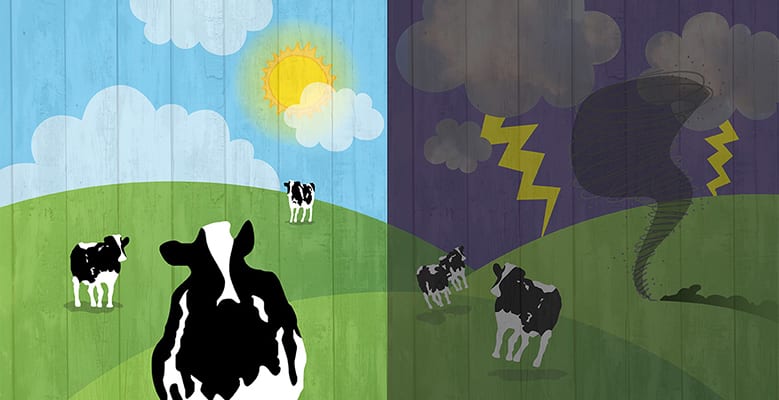5 Craziest Climate Things
March 8, 2016

It seems like every year we see the “warmest year on record” headlines splashed across our newsfeeds. And with that steady increase in temperature, we’re experiencing some pretty crazy impacts on our planet’s complex climate systems. From record heat to record rain, 2015 showed how climate change is making extreme weather more and more the norm. Here are five of the wildest events that happened last year:
1. 2015 Was the Warmest Year on Record, Again
Fifteen of the sixteen warmest years since 1880 (the year we started tracking this stuff) have occurred since 2000. So it was sadly unsurprising that 2015 once again took the title— but what shocked scientists was just how much hotter it was. Compared to the 20th century average temperature, last year was 20% warmer than any previous increase. The scariest part is that if this trend continues, 2016 will once again be the warmest year on record, with increases becoming more and more extreme.
2. California Snowpack is Down by 94%
At this point, we’ve all heard that California is facing its worst drought on record. And while climate change isn’t the only culprit, it is adding to the burden. For most of California, the mountains act as a water supply, storing snow over the winter that runs off in rivers and streams come spring and summer, eventually flowing through the taps and hoses in the state. But for years now, we’ve known that as climate change ticks the background temperature up and up, freezing levels are also creeping higher and higher in altitude. That’s messing with the amount of snow the mountains get, which last year was only 6% of the normal level in California after a record warm winter. That’s like trying to fill the bathtub when you’ve been disconnected from the water supply, and it’s only making the drought worse.
3. Thousand-Year Floods Have Become a Yearly Occurrence
While California was struggling with a lack of water, states such as Oklahoma, Texas, Arkansas and Nebraska were dealing with record rainfall, and South Carolina saw the country’s 6th 1,000-year flood in the preceding 5 years. You know, those floods that are so statistically rare that they’re predicted to happen once every thousand years? We’ve had 6 of them since 2010. And while scientists say that this extreme weather is naturally caused, climate change once again is upping the frequency and likelihood that these sort of events may occur. In what scientists are now calling “weather whiplash,” we’re likely to see more and more dangerous extremes, such as a region of the US switching from drought conditions to torrential deluges, and back again.
4. Temperatures Reached Literally Immeasurable Heights
Extreme weather means extreme heat. Last July, a town in Iran was so hot (115 degrees Fahrenheit) and so humid (dew point of 90), that the heat index – a method of calculating how the heat and humidity actually feel – was literally off the charts and could not be measured. The National Weather Service’s heat index only goes up to 136, and the best guess is that Iran felt like 165 degrees that day. Of course 165 degrees is way too hot. The event led to the deaths of over 60 people and the hospitalization of another 580.
5. The Largest Ever Gathering of Heads of State Make a Climate Deal
2015 also saw another historical moment, when the largest ever gathering of heads of state convened in Paris to craft a global deal on limiting carbon pollution. The United Nations Climate Conference (COP21) was a major step forward, with 196 countries agreeing on the goal of limiting additional warming to below 1.5 degrees Celsius. It also called for creating a fund to assist the most vulnerable, developing countries in adapting to the current impacts of climate while building local renewable energy capacity. And with so many leaders on board, businesses are hearing the message and shifting their priorities to creating solutions.
Extreme weather seems like what we are in for if we don’t make a global shift away from carbon pollution. But agreements like the COP21 and the passion of climate activists around the world make it clear that we are making progress, and we’ve got to keep working. Let’s keep up the pressure for 100% clean energy by 2050— the best way for a fair transition off of fossil fuels once and for all.


